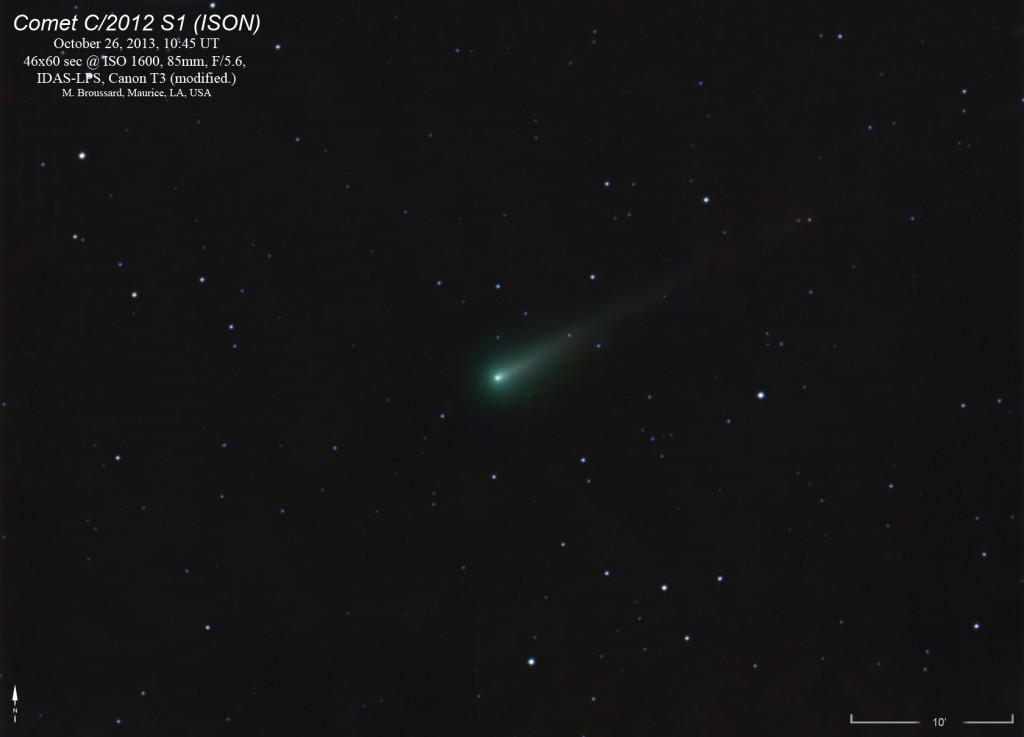
Another version of ISON. Still working on the color on this one.
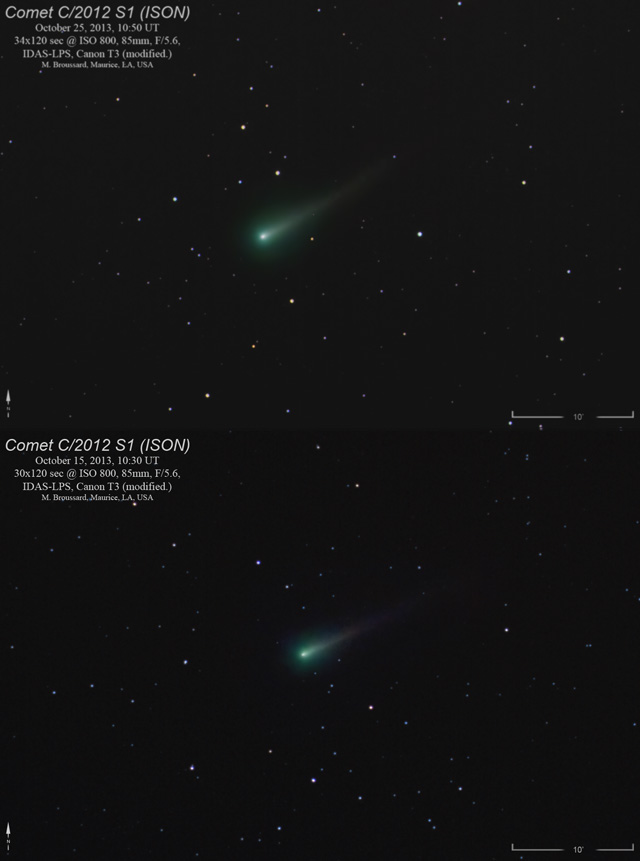
Ten days ago on October 15, 2013, I posted an image here on my blog that I took showing Comet ISON and how it looked at the time. Today, October 25, 2013, I want to show how Comet ISON has grown in size and brightness. Please note that all the equipment used to take the images and the image size are all the same.
Continue reading Comet ISON Growing in Size – Nearly Doubled in 10 Days!
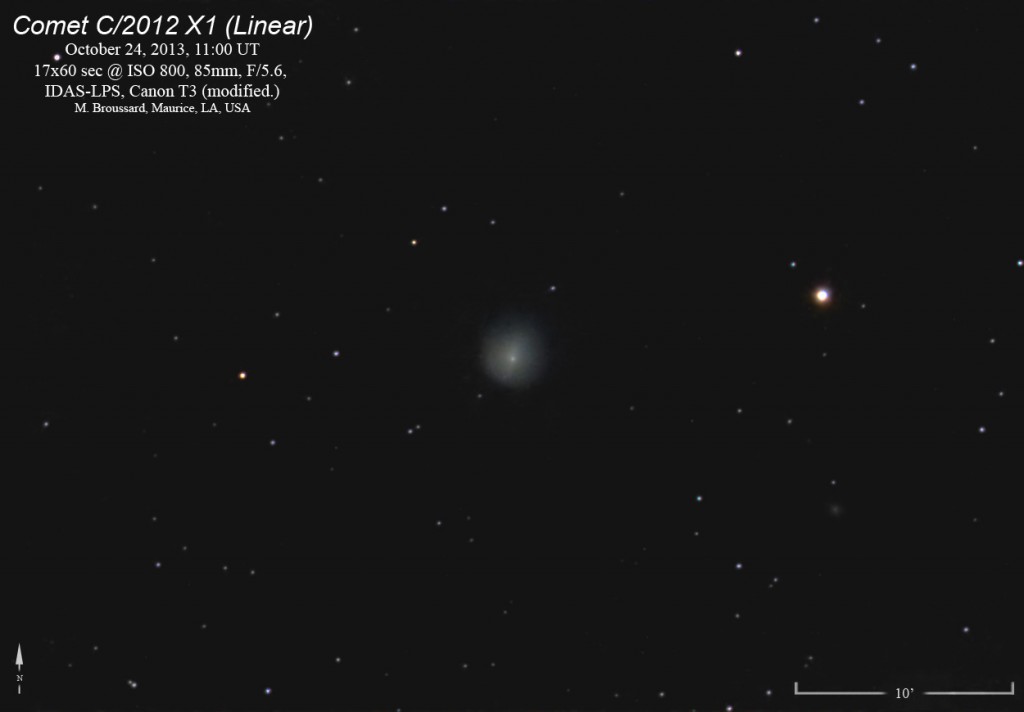
My first image of the “exploding” Comet Linear. Sometime before October 20th, 2013, it is believed that the comet went from below magnitude 14 to magnitude 8.5 in an “explosive” outburst. This is reminiscent of Comet Holmes back in October of 2007. In Comet Holmes case, the comet reached naked eye visibility soon after the outburst started. C/2012 X1 is still a long way away from that level of brightness and is not expected to get anywhere close to naked eye visibility until, if the trend continues, February of 2014.
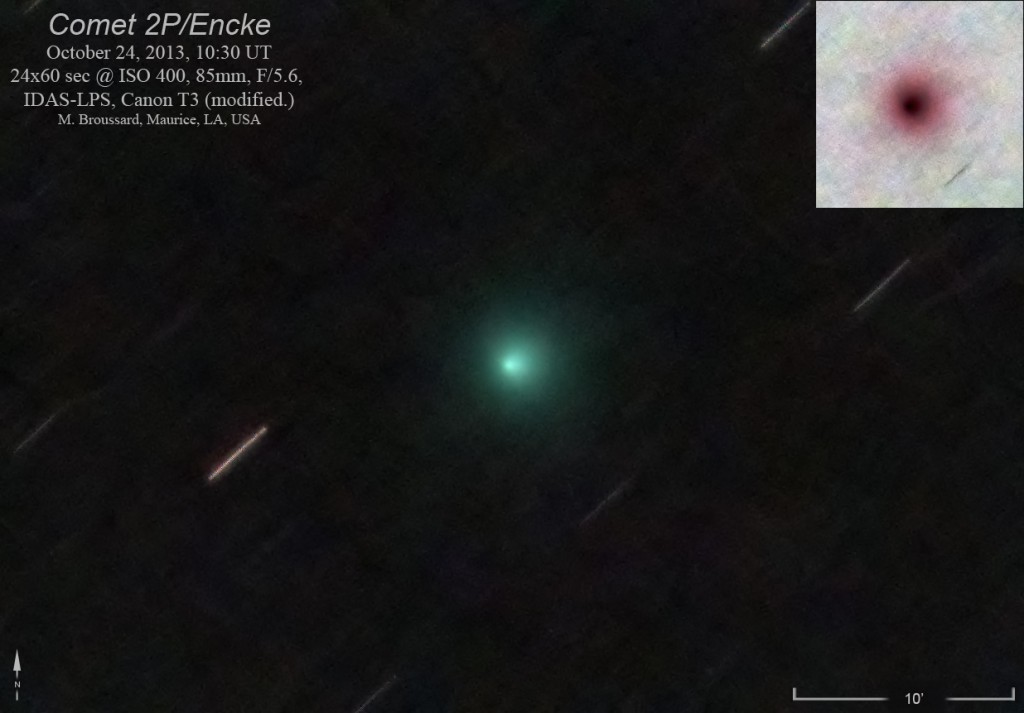
While waiting for Comet Linear to rise into position, I shot 24 minutes worth of subs of Comet Encke. ISO 400 did not go as deep as I thought it would. I’ll have to shoot this one again with higher ISO settings or longer exposures. BTW, I have another version with the stars frozen instead of streaked:
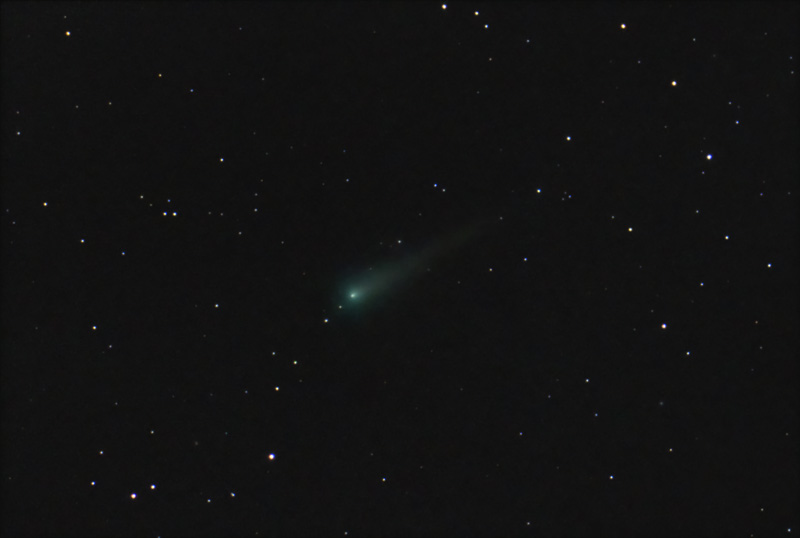
I had setup the scope to catch Comet Linear, so ISON was not really my target this time. It was in the trees most of the time. However, there was a short window where it was in the clear and I managed to get 9 minutes of data on it. Not enough for an eye-popping image but enough to document its progress since my last session with it.
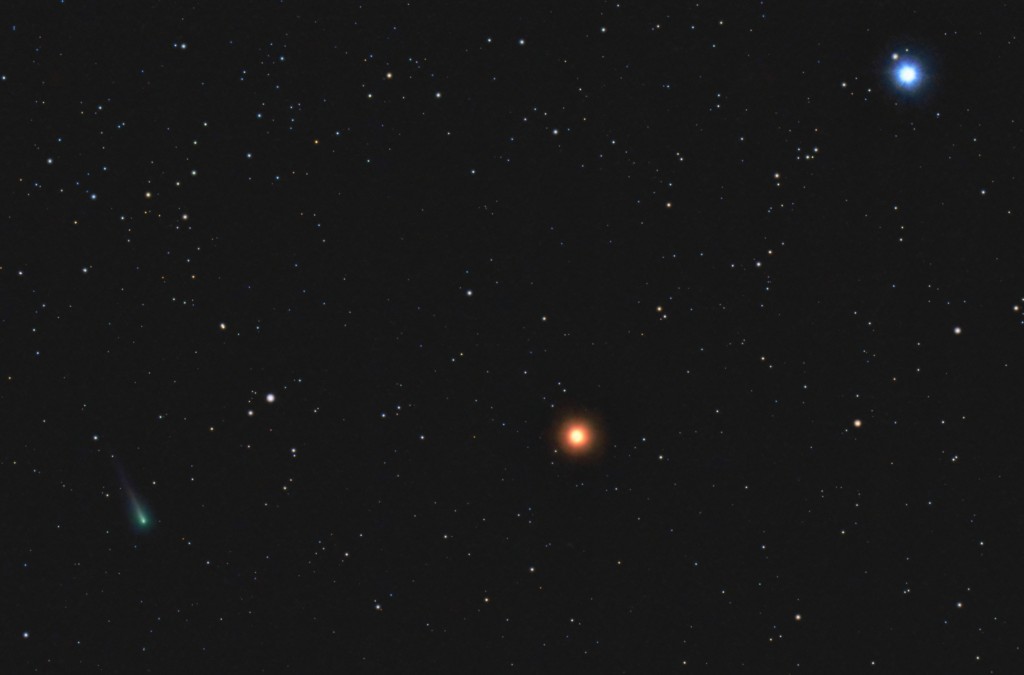
In this shot, I rotated the camera to a portrait orientation and managed to fit all three objects in one frame. I was not sure I could get this to work since my scope didn’t have the clearance to have the camera in this position. But, I managed to figure out a way.
Continue reading Comet ISON, Mars and Regulus – October 16, 2013
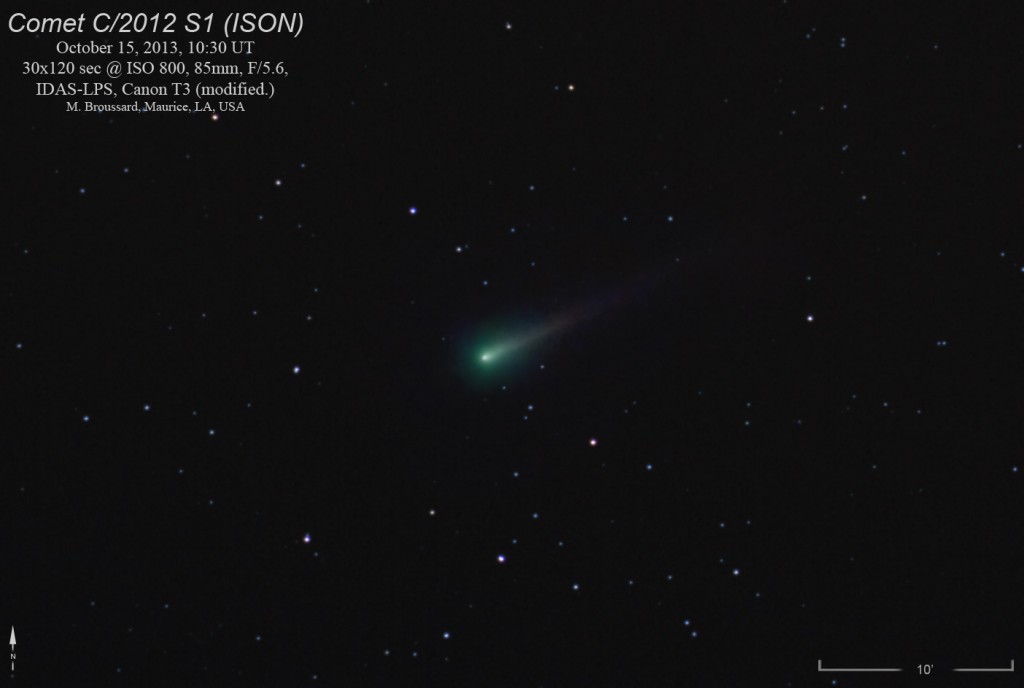
I cleared more of my eastern sky of blocking tree branches and waited until another clear morning. On Tuesday, October 15th, 2013, I got my chance to image Comet ISON again. It looks larger to me than it was a week ago. I used the same sub exposure time but with more sub-images.
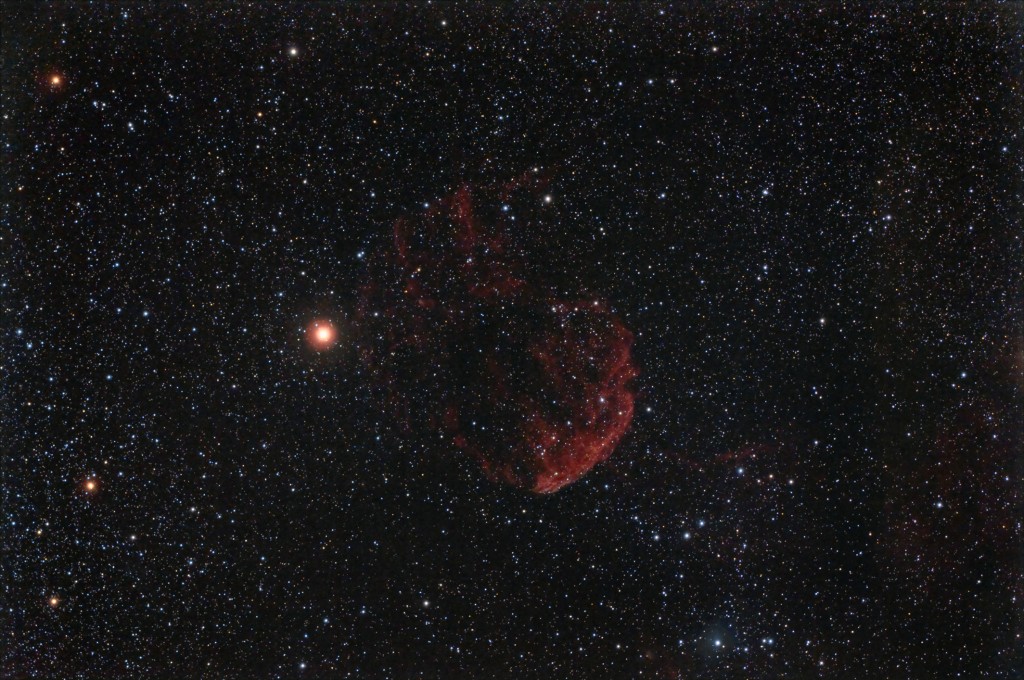
This was just me playing around with something while waiting for Comet ISON to rise high enough to begin imaging. It is only 24 minutes of integration and it really needs ten times that much. Another project for another day, I guess. Or, I’ll just keep plugging away at it before shooting the comets and I might get enough data to make this project worth my time.
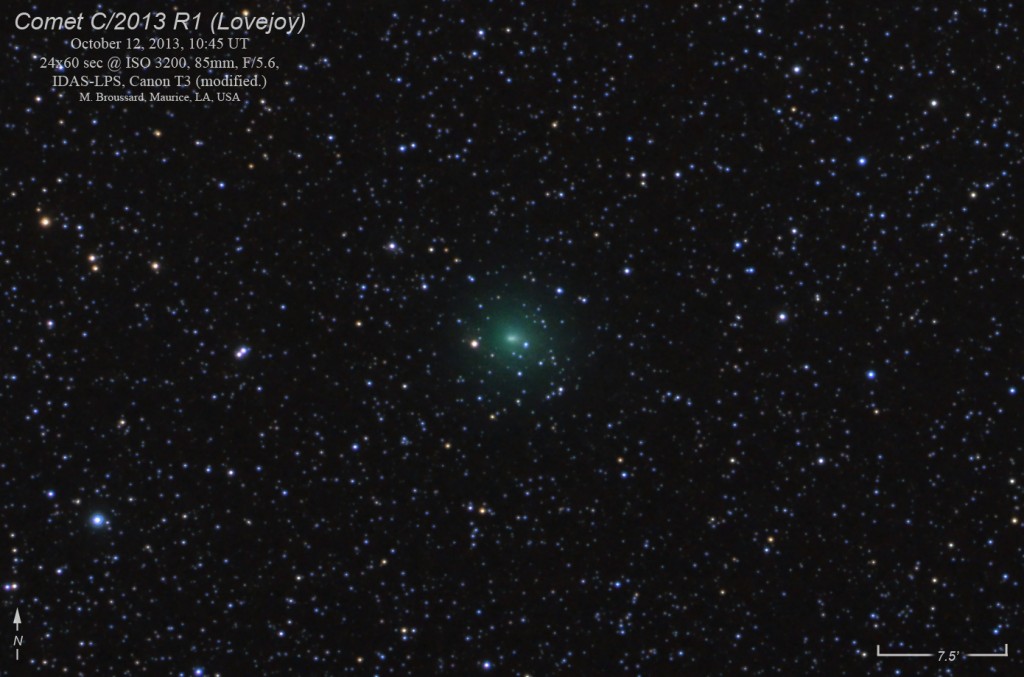
I tried shooting some sub-images of Comet ISON on Saturday morning, Oct 12th, but the fog and murk near the horizon was too much and the comet was barely registering. So, I switched to Comet Lovejoy, which was much higher in the sky. With the dawn quickly approaching, I went with one minute exposures and managed to get 24 good ones before twilight put a stop to my efforts. Twenty-four subs gives me enough noise reduction to make it worth while.

This is a busy area in the Auriga constellation. M38 is an open cluster at the top of the frame. Beneath that is NGC 1907, another open cluster. To the right side is a faint nebula listed as LBN794 in Cartes du Ciel. At the bottom of the frame another patch of nebula known as IC 417/LBN804.
Edit: I managed to add 40×30 sec @ ISO 6400 sub-images to this and the above image has been updated. Below is the original details and image: